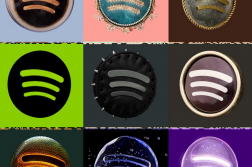CW: paedophilia
Comedian Charlie Chaplin, actress Evelyn Nesbit and the 1978 film Pretty Baby are all linked by one theme – underage relationships in Edwardian America. In this period, there seemed to be a marked increase in young girls being viewed with greater curiosity, sometimes sexual.
This occurred, and in part conflicted, with contemporaneous studies of what constituted ‘adolescence’, the increasing transiency in marriage that allowed sexual exploitation and the advent of the silver screen – an evolving industry which condoned the ‘casting couch’, and gave men the power to project their desires onto the young actresses on screen. The repercussions of these developments are still being felt across western society today as cinema continues to evolve.
The topic of Chaplin’s penchant for excessively young women has been mentioned on-and-off for decades, often when similar, and contentious, relationships reappear. In 2017, Hollywood was shaken as it was revealed that film producer Harvey Weinstein was a serial sexual predator. This led to The Times proffering a comparison of Chaplin as ‘the Weinstein of his day’, while in 2020, The Telegraph referred to Chaplin’s ‘perverted, degenerate and indecent acts’.
Chaplin was married four times, and the first two marriages were to sixteen-year-old’s, marrying actress Lita grey when he was 35. For his fourth marriage, he eloped with 18-year-old Oona O’Neill when he was 54. O’Neill’s father, the famous playwright Eugene O’Neill, strongly disapproved of the match, indicating increased parental condemnation of underage relationships in this period. Combined with a paternity lawsuit and Chaplin’s leftist political views, he became an effective outcast in America by the 1950s, causing him to leave for Europe.
His behaviour has often been used in contemporary journalism as a comparison for sexual scandals involving adolescence, viewed with a modern perspective. Yet it needs to be more fully interpreted with historical context to shed light on the phenomenon of underage relationships, and interrogate why they persist to this day.
In Victorian Britain, marriages between an older man and a younger women were commonplace, yet it seems that at the turn of the century, shifts were occurring in how young women were viewed and objectified. Evelyn Nesbit was active in the same period as Chaplin – 1901–1930 – and, similar to him, her relationships damaged her social standing with the American public. As a young model she attracted older men, with a 47-year-old called Stanford White taking advantage of her when she was just 15. Out of jealousy, White was later shot at close range by her husband – the much older millionaire, Harry Kendall Thaw.
Nesbit typifies the type of actress Chaplin would have fallen for had their paths crossed; the BBC wrote a piece on Nesbit as the ‘It Girl’ of her day, appearing widely in various art forms. They make the pertinent point that in this period, starchy Victorian ideals were gradually fading as the permissive Roaring 20s beckoned, arguably producing a clash of attitudes. In addition to the Victorian ideals of male protectionism – i.e. rescuing fallen women – that Chaplin grew up with, the burgeoning silver screen of the early-20th century reaffirmed and reshaped the pre-existing interest with youthful femininity, and many of the young women Chaplin met were aspiring actresses. This situation was ripe for exploitation.
The film Pretty Baby depicts a fictitious tale, set in a Louisianan red-light district in 1917, in which photographer Ernest J. Bellocq (a real character) enters into a relationship with a child prostitute – Violet, played by a young Brook Shields – whose virginity was auctioned off at 12. The film was X rated in the UK and banned by the Ontario Film Classification Board the year it came out due to Shields’ nude scenes, as she was also 12 at the time of filming. The film’s director Louis Malle was attacked by the press, and the columnist Rona Barrett deemed the film to be ‘child pornography.’
Shields’ age when she was cast for such a role, combined with the film’s perceptive of its subject matter, indicates a continuance of the theme of underage relationships, grounded in curiosity and exploitation. Professor Nicholas L. Syrett’s book American Child Bride (2016) looks at the progression of underage marriage in American history and the confused categorisation around age, with different marriage laws in different states. From 1880 to 1930, the percentage of married girls aged fifteen (or under) steadily increased, despite the growing stigma that derived from increasing cultural weight around concepts of ‘adolescence’ and ‘paedophilia’. Likewise, the advent of High Schools gave prevalence to the notion of ‘teenage years’ that reached its culmination in the 1950s.
Yet despite these developments, underage marriage continues in parts of America – between 2000 and 2015, 200,000 children were married in the U.S. due to legal loopholes. The youngest was aged just 10. This is in part due to rural location and impoverished situations, yet it is possible that the mixed messages in films like Pretty Baby, inspired by the era of Nesbit and Chaplin when this issue was prevalent, plays a part.
In the Edwardian American metropolis, the practice of underage marriage was slowly rejected, yet the continued objectification of women, aggravated by the advent of cinema, prevented the outright demise of the outrageous practice. This article is not just about underage marriage, but about adult perceptions of underage girls. We have a lot to thank cinema for, but with any new industry, its sustained impacts on society are continuous and far-reaching.



